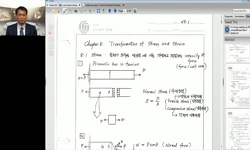Si(001) 기판위에 에피성장된 격자변형 및 격자완화된 Si₁-xGex(0.07≤ x ≤ 0.23) 합금에 대한 유효 유전함수들이 분광타원해석법을 이용하여 상온에서 2∼5.3 eV 에너지 영역에서 측정되었다. 격...
http://chineseinput.net/에서 pinyin(병음)방식으로 중국어를 변환할 수 있습니다.
변환된 중국어를 복사하여 사용하시면 됩니다.
- 中文 을 입력하시려면 zhongwen을 입력하시고 space를누르시면됩니다.
- 北京 을 입력하시려면 beijing을 입력하시고 space를 누르시면 됩니다.
Spectroscopic Ellipsometry Study on Strained and Relaxed Si₁-xGex Alloys = 격자변형 및 완화된 Si₁-xGex 합금에 대한 분광타원해석적 연구
한글로보기https://www.riss.kr/link?id=A2017095
-
저자
Kim, Kwang Joo (Physics, College of Science, Kon-Kuk University) ; Bahng, Jae Ho (Physics, College of Science, Kon-Kuk University) ; Park, Jung Hyun (Physics, College of Science, Kon-Kuk University) ; Kwak, Chul Young (Physics, College of Science, Kon-Kuk University)
- 발행기관
- 학술지명
- 권호사항
-
발행연도
1996
-
작성언어
English
- 주제어
-
KDC
404
-
자료형태
학술저널
-
수록면
27-33(7쪽)
- 제공처
- 소장기관
-
0
상세조회 -
0
다운로드
부가정보
국문 초록 (Abstract)
Si(001) 기판위에 에피성장된 격자변형 및 격자완화된 Si₁-xGex(0.07≤ x ≤ 0.23) 합금에 대한 유효 유전함수들이 분광타원해석법을 이용하여 상온에서 2∼5.3 eV 에너지 영역에서 측정되었다. 격자완화된 의 경우 3.4 eV 근처에서 나타나는 , E₁ 및 E₁+△₁밴드간 전이에 의한 전이구조는 Ge 성분비가 증가함에 따라 점차 저에너지 쪽으로 이동하고 4.2 eV 근처에 나타나는 E₂밴드간 전이에 의한 전이구조는 거의 변화하지 않는 것이 발견되었다. 격자 변형된 경우 3.4 eV 근처에서 나타나는 전이구조의 저에너지 이동이 격자완화된 경우와 비교하여 적은 것으로 판명되었다. 시료들의 유효유전함수들에 대한 2차 미분 결과들에 대한 line-shape analysis를 수행하여 , E₁ 및 E₁+△₁전이구조들의 에너지 이동을 조사하였다. 조사 결과 전이구조의 저에너지 이동이 E₁및 E₁+△₁ 전이구조의 이동에 비하여 큰 것으로 나타났고 이동비율은 격자변형된 시료들에서 큰 것으로 나타났다. 또한 격자 변형된 합금에서의 전이구조들의 에너지가 격자완화된 합금에서와 비교하여 고에너지 쪽으로 이동하였다. 이와 같은 격자변형된 합금에서의 에너지 이동은 deformation potential 이론에 의한 예측 결과와 일치하였다.
다국어 초록 (Multilingual Abstract)
Pseudodielectric functions of strained and relaxed Si₁-xGex (0.07≤ x ≤ 0.23) alloys grown epitaxially on Si(001) substrates have been measured ellipsometrically at room temperature in the 2∼5.3 eV photon energy region. For the relaxed al...
Pseudodielectric functions of strained and relaxed Si₁-xGex (0.07≤ x ≤ 0.23) alloys grown epitaxially on Si(001) substrates have been measured ellipsometrically at room temperature in the 2∼5.3 eV photon energy region. For the relaxed alloys, the structure at about 3.4 eV due to the and E₁+ △₁ interband transitions is found to shift gradually to lower energies as the Ge composition increases while the 4.2 eV structure due to the E₂interband transitions remains at about the same energy. On the other hand, for the strained alloys, the rate of the low-energy shift of the 3.4-eV structure for increasing Ge composition is found to be smaller than that for the relaxed alloys. A line-shape analysis on the numerical second derivative spectra of the pseudodielectric functions have been performed and the critical-point energies of the E , E₁, and E₁+△₁transition edges for the strained and relaxed samples are obtained. Results of the line-shape analysis indicate that the rate of decrease of the energy for increasing Ge composition is bigger than those of the E₁and E₁+△₁energies for both the relaxed and strained samples with the difference being bigger for the strained samples. Also, the , E₁ and E₁+△₁transition edges for the strained alloys shift to higher energies compared to those for the relaxed alloys. Such strain-induced shifts in the transition energies agree with the changes in the electronic band structure of alloys predicted by the deformation potential theory.
동일학술지(권/호) 다른 논문
-
Ellipsometric Study of Strain Effect in Epitaxial CdTe Grown on GaAs(001)
- 建國大學校基礎科學硏究所
- Kim, Kwang Joo
- 1996
-
밤바구미(Curculio dentipes) 월동 중 휴면 유충의 Ecdysteroid의 농도 변화
- 建國大學校基礎科學硏究所
- 유진수
- 1996
-
- 建國大學校基礎科學硏究所
- 이호준
- 1996
-
Pion Single Charge Exchange at Low Energies
- 建國大學校基礎科學硏究所
- Jyoo, Yeong-Heum
- 1996




 RISS
RISS







